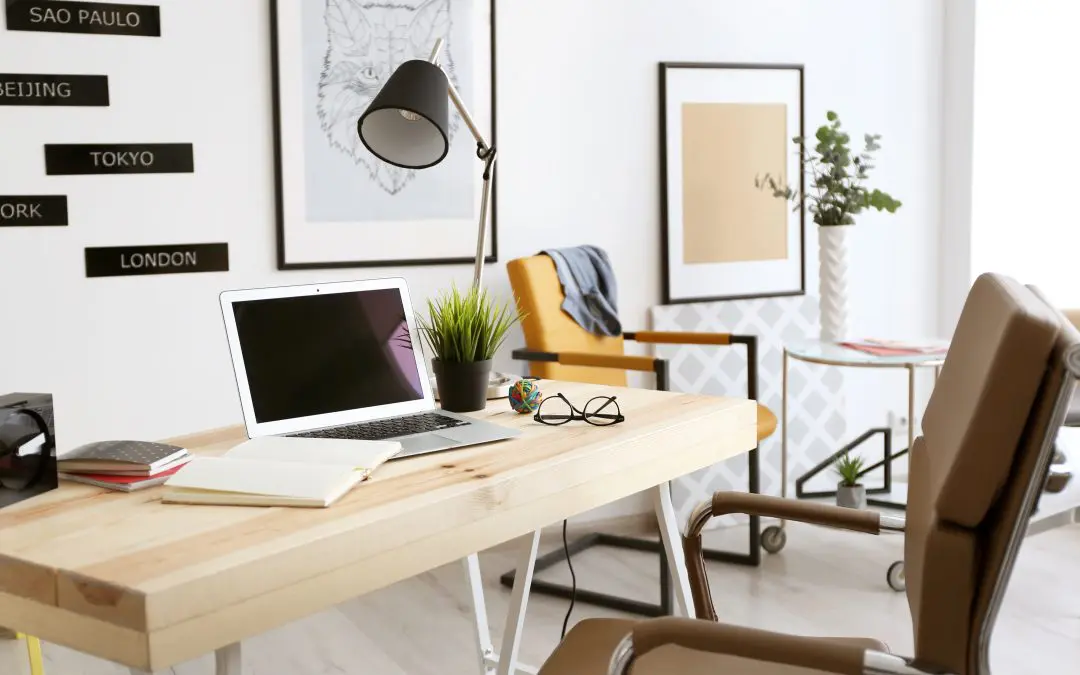Let’s face it: working from home can be a dream or a disaster. The difference? A well-designed home office. Forget the kitchen table chaos or the bedroom bedlam. A dedicated space transforms remote work from a survival situation to a thriving success. Creating a home office that keeps you productive and focused is the goal.
Location, Location, Location
The first step is choosing the right spot. Consider the quietest areas of the house. A spare bedroom is ideal, of course, but a converted attic, a spot in the basement, or even a section of a larger room works perfectly. Divide the space from the rest of the house. Separate mental space translates to separate physical space. Light is also crucial. Natural light boosts mood and productivity. Position the desk near a window, if possible. If natural light is lacking, invest in good quality, adjustable artificial lighting. Think layered lighting: ambient, task, and accent.
Creating A Home Office: The Power of Ergonomics
A comfortable setup is non-negotiable. You’ll spend a significant portion of the day seated, so investing in an ergonomic chair is a must. Look for adjustable height, lumbar support, and armrests. The desk should also be at an appropriate height, allowing for a neutral wrist position. A standing desk is a fantastic option for those who want to alternate between sitting and standing, promoting better circulation and reducing back pain. The monitor should be at eye level to prevent neck strain. A separate keyboard and mouse are also recommended for optimal comfort and efficiency.
Technology and Connectivity
In the digital age, a reliable internet connection is the lifeline of remote work. Make sure there’s a strong and stable Wi-Fi signal in your chosen office space. Use a wired Ethernet connection for critical tasks that require maximum bandwidth. Invest in a high-quality monitor, keyboard, and mouse. A good webcam and microphone are essential for video conferencing. Don’t forget a printer, scanner, or any other tools necessary for your job. A clutter-free workspace is a productive workspace. Implement cable management solutions to keep wires organized and out of sight.
Personalization and Inspiration When Creating A Home Office
A home office shouldn’t feel sterile. Add plants to bring a touch of nature and improve air quality. Display artwork or photos that inspire creativity. A whiteboard or corkboard can be useful for brainstorming and organizing ideas. Get a comfortable rug to add warmth and texture to the space. The little things add up. A favorite mug, framed photo, or scented candle will make the space feel more inviting and less like a corporate cubicle.
Sound and Focus
Distractions are the enemy of productivity. Soundproofing or sound absorption is helpful, especially in busy households. Add sound-absorbing panels or thick curtains to minimize noise. Noise-canceling headphones are a must-have for focused work sessions. A white noise machine or ambient music will also help create a calm and productive environment. Establish clear boundaries with family members to minimize interruptions during work hours.
Organization and Storage
Clutter breeds chaos. Implement a robust organizational system. Invest in storage solutions like shelves, drawers, and filing cabinets. A label maker can be a lifesaver. Keep the desk surface clear of unnecessary items. A daily or weekly cleaning routine will help maintain a tidy and organized workspace. A well-organized space fosters a clear mind, increasing productivity and reducing stress.
Creating a successful home office is an investment in productivity and well-being. Design a space that supports focus, inspires creativity, and promotes comfort.
FAQs About Creating A Home Office
How much should I expect to spend on a home office setup?
The budget varies greatly depending on individual needs and preferences. A basic setup can be achieved for a few hundred dollars, while a more elaborate setup with ergonomic furniture and high-end technology can cost several thousand. Prioritize ergonomic essentials and invest in quality where it matters most.
What is the best color for a home office?
Neutral colors like blues, greens, and grays are generally recommended. These colors promote calmness and focus. Personal preference definitely plays a role. Choose colors that inspire creativity and productivity.
How do I deal with distractions from family members?
Communication is key. Establish clear boundaries and communicate work hours. Use a “do not disturb” sign or set up a designated work area with a door.
What are the best plants for a home office?
Low-maintenance plants like snake plants, pothos, and ZZ plants are excellent choices. They improve air quality and add a touch of greenery to the space.
How can I improve my Wi-Fi signal in my home office?
Use a Wi-Fi extender or mesh network to boost the signal. The most reliable option is a wired Ethernet connection. Make sure the router is centrally located and free from obstructions.
What is the ideal desk height for ergonomics?
The ideal desk height allows for a 90-degree angle at the elbows when seated. The forearms should rest comfortably on the desk surface. An adjustable desk is highly recommended.
Robertson Home Inspection offers inspections to customers in the Piedmont Triad area of North Carolina. Contact us to book our services.

